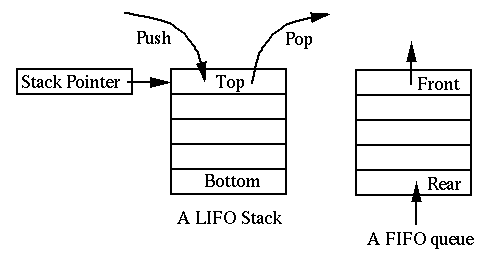

In the following printout, the output FIFO queue was set to 20 packets and a UDP packet flood was started to saturate the output queue: a1#show running interface serial 0/1/0 The actual size of the output queue is set by the hold-queue out interface configuration parameter. Interface FastEthernet0/0 queueing strategy: noneįIFO queuing sets tx-ring size to maximum size supported by hardware Reserved Conversations 0/0 (allocated/max allocated) Output queue: 0/95 (size/max total/threshold/drops)Ĭonversations 0/149/256 (active/max active/max total) part of BFS in Graphs, level-order traversal for trees. Resource allocation: Forwarding network traffic in network switches and routers. Examples of usage of FIFO queues: Program execution: Requests for access to memory, disk, network.

Input queue: 0/75/0/0 (size/max/drops/flushes) Total output drops: 212296 FIFO Queues First-in first-out (FIFO) queues. Step 2) To work with FIFO queue, call the Queue class using the queue module imported as shown below: import queue q1 queue. Interface Serial0/1/0 queueing strategy: fair There are 2 types of queue FIFO (first in first out) and LIFO (last in first out). Expect defaults to vary across router platforms. With no QoS configuration, serial interfaces on ISR routers (2811 was used to generate the printouts) use fair queuing and the Fast Ethernet interfaces use FIFO queuing. The actual queuing mechanism can be inspected with the show queueing interface name command.

Fair queuing is also used whenever a service-policy using a queuing action ( bandwidth, priority or fair-queue) is applied to an interface. Without any QoS-related interface configuration, Cisco IOS uses fair queuing on low-speed interface (up to a few megabits) and FIFO queuing on higher-speed interfaces. The following example creates and adds elements in the Queue using the Enqueue() method.Ī Queue collection allows null (for reference types) and duplicate values.Articles » Technology Resources » QoS Resources » FIFO Queuing You can create an object of the Queue by specifying a type parameter for the type of elements it can store. (That is, if they are applied correctly.) Fairness of queues is directly to customer satisfaction. There are no shortcuts or jumping ahead within FIFO rules. This makes FIFO fair in the eyes of customers: the earlier you join the queue, the sooner you get served. However, with a longer queue, packets may experience more delay and jitter. If the queue is less likely to fill, fewer packets will be dropped. If you configure a longer FIFO queue, more packets can be in the queue, which means that the queue will be less likely to fill. The following figure illustrates the Queue collection: Creating a Queue First-in, first-out is inherently a very simple, easily understood principle. FIFO Queuing uses tail drop to decide when to drop or enqueue packets.

Elements can be added using the Enqueue() method.It provides compile-time type checking and doesn't perform boxing-unboxing because it is generic. Queue can contain elements of the specified type.Queue is FIFO (First In First Out) collection.It is recommended to use the generic Queue collection. It contains the elements in the order they were added.Ĭ# includes generic Queue and non-generic Queue collection. Queue is a special type of collection that stores the elements in FIFO style (First In First Out), exactly opposite of the Stack collection.


 0 kommentar(er)
0 kommentar(er)
